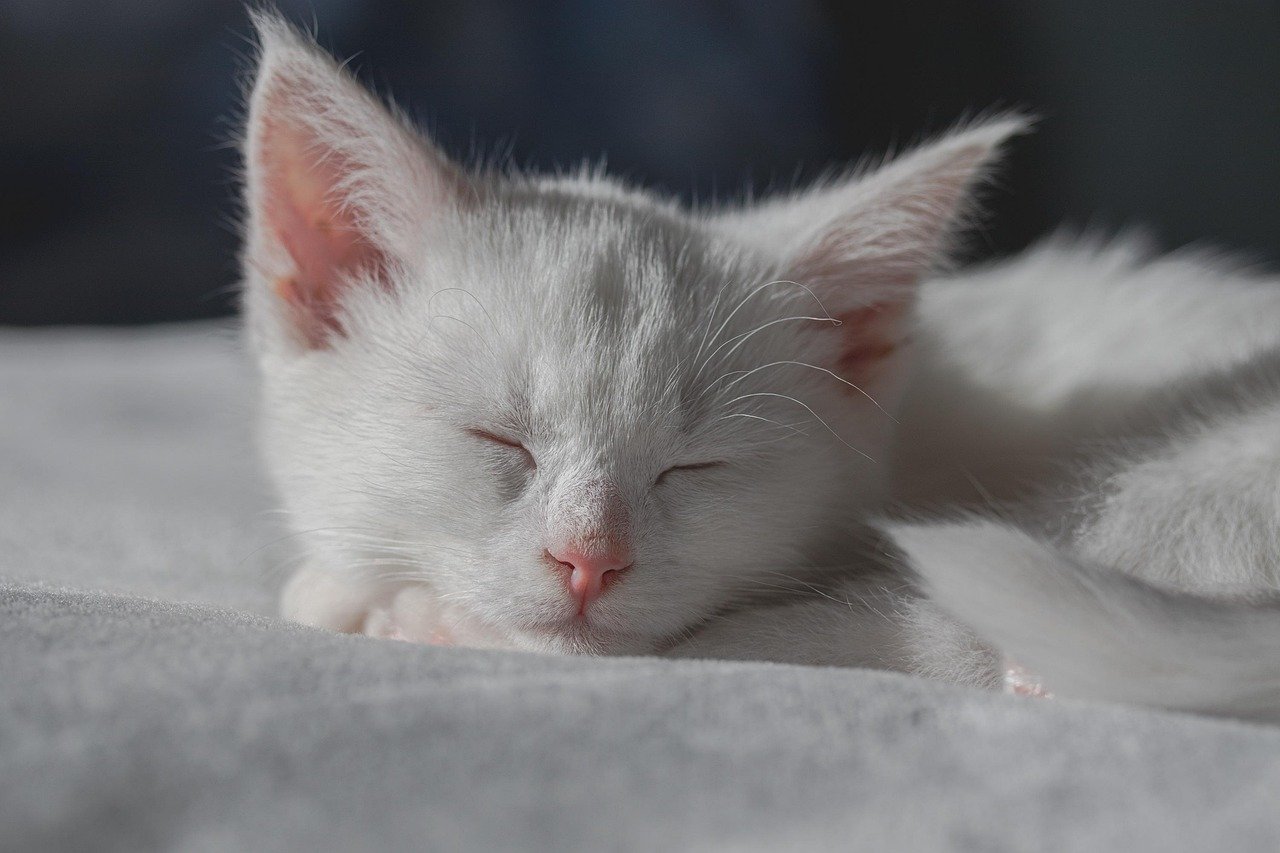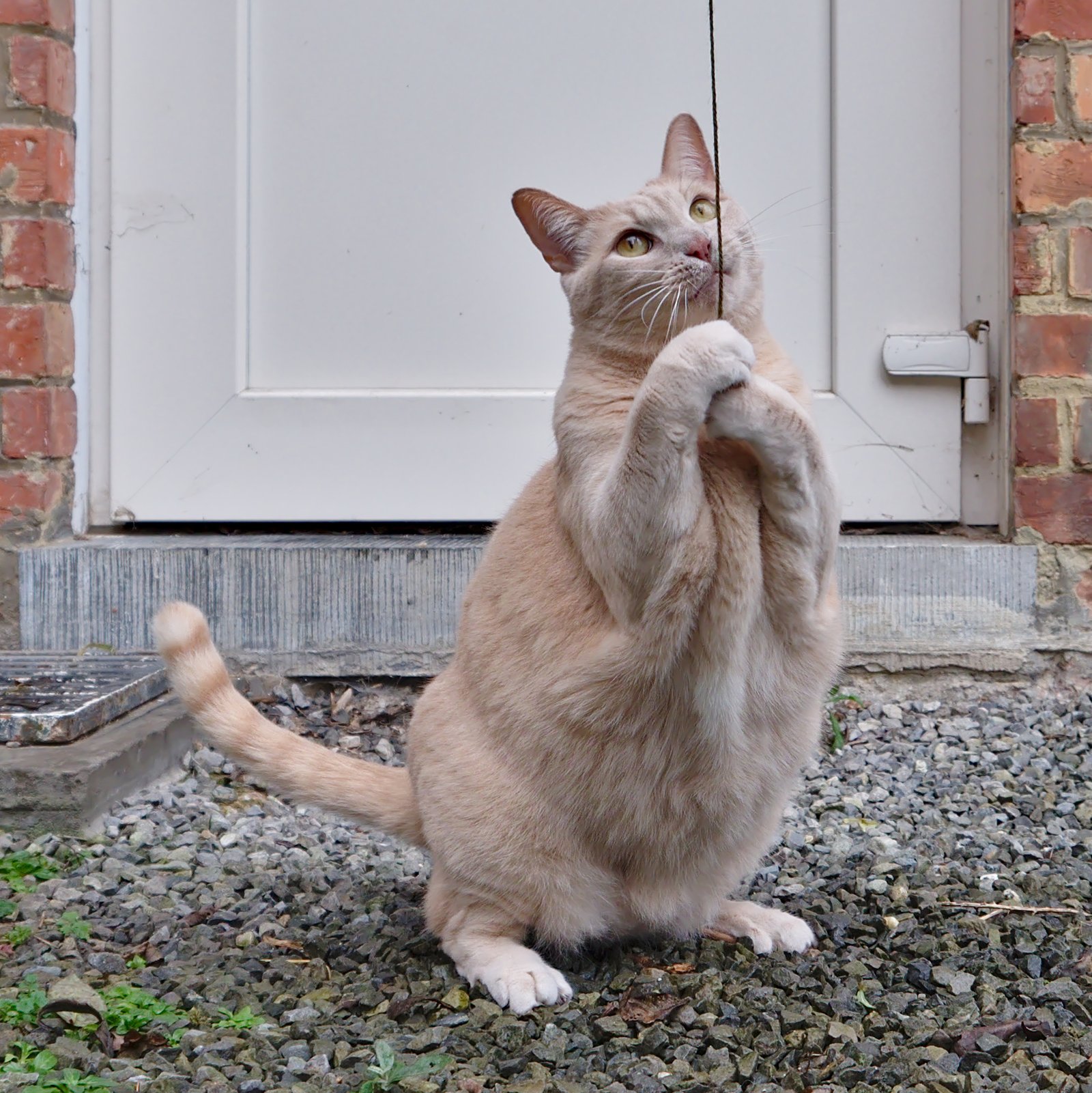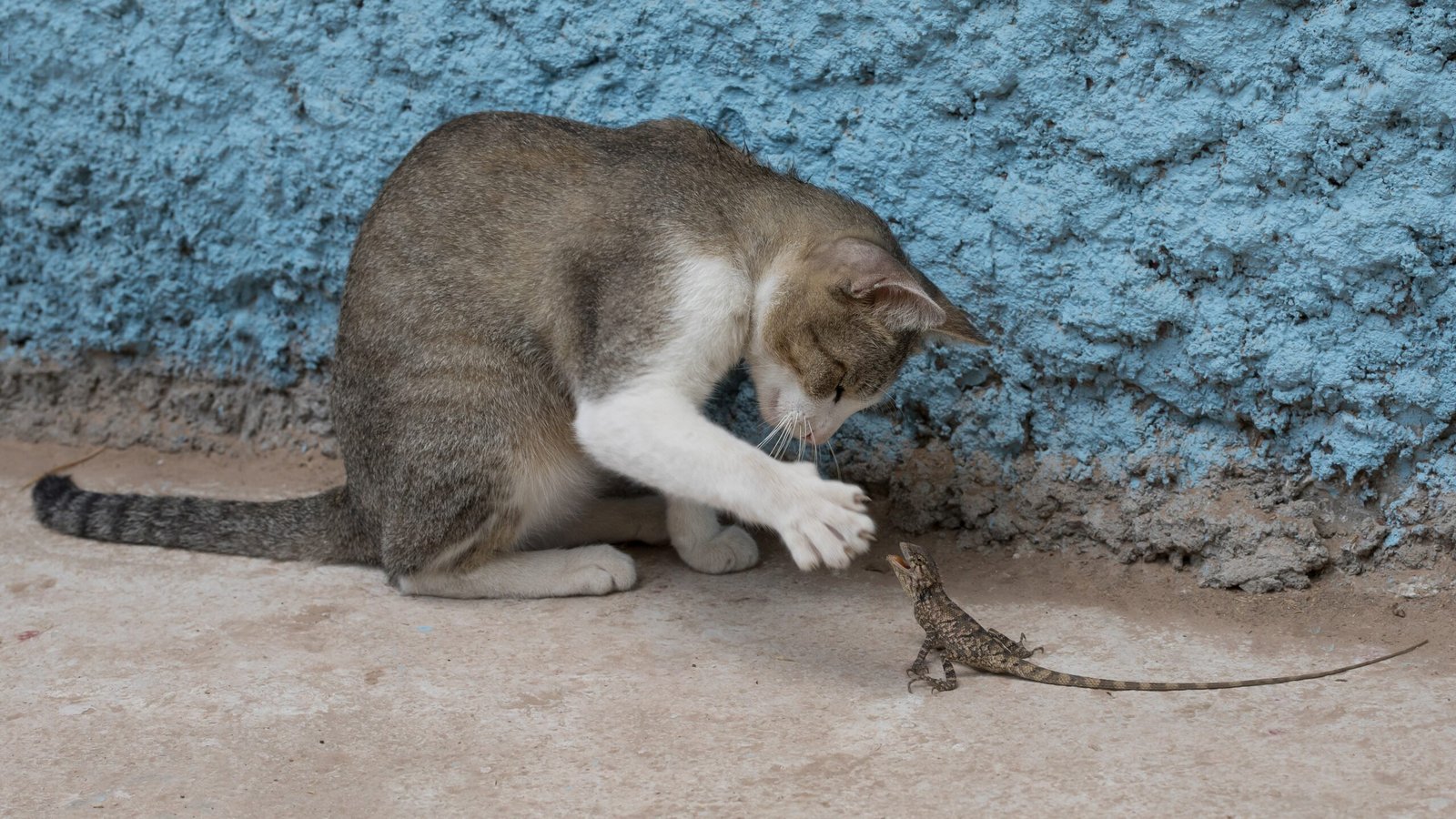Have you ever wondered what goes on in the mind of a quiet cat? One moment, they’re curled up in a sunny corner, eyes half-closed, so gentle and serene you almost forget they’re there. But that tranquility hides a world of feelings. Quiet cats often experience the world differently, and their need for emotional security runs deep. If you’ve ever watched your shy kitty flinch at sudden noises or slink away from new visitors, you know how heartbreaking it can be. But here’s the good news: with a bit of patience and understanding, you can turn your home into a sanctuary where your reserved feline feels safe, confident, and truly at ease. Let’s dive into the art of nurturing emotional security for your gentle, quiet cat—one soothing step at a time.
Recognizing the Personality of a Quiet Cat

Understanding the unique personality of a quiet cat is the first step toward helping them feel safe. Unlike their bolder counterparts, quiet cats may be more observant and cautious, preferring to watch from the sidelines. They’re often sensitive to changes in their environment, and sudden movements or noises can leave them feeling unsettled. You might notice that these cats avoid the center of attention, choosing instead to hide or find a cozy spot away from the hustle and bustle. Recognizing these behaviors isn’t about labeling your cat as “timid” or “scaredy”—it’s about honoring who they are. When you see the world through their eyes, you can start to anticipate their needs and create a home that makes sense for their gentle nature. This awareness is the foundation of emotional security.
Setting Up Safe Spaces in Your Home

A quiet cat thrives when they have a safe, retreat-like space to call their own. Think of it as their personal castle, a place where they can escape when the world gets overwhelming. This could be a soft bed tucked under a table, a cozy box in a quiet room, or even a spot up high where they can survey their kingdom without being disturbed. Adding soft blankets, familiar scents, and maybe even a favorite toy can make these spaces extra inviting. Resist the urge to move these safe zones around too much—consistency is comforting for your cat. When your feline knows they have a reliable hideaway, it’s like giving them an emotional safety net, something to fall back on whenever life feels a bit too loud or unpredictable.
Respecting Their Boundaries

One of the most loving things you can do for a quiet cat is to respect their boundaries. It can be tempting to scoop them up or shower them with affection, but sometimes, less is more. Pay close attention to body language: flattened ears, twitching tails, or a stiff posture are all signs your cat needs space. Instead of forcing interaction, let your cat come to you on their own terms. Sitting quietly nearby, reading or just being present, can be an invitation for them to approach when they’re ready. By honoring their need for distance, you build trust and show them that their feelings are valid. Over time, this gentle respect helps your cat feel more secure, knowing their comfort always comes first.
Creating a Calming Environment

The atmosphere of your home plays a massive role in your cat’s emotional well-being. Quiet cats benefit from a calm, predictable environment. Try to keep loud noises and sudden changes to a minimum. Soft lighting, gentle background music, or even a white noise machine can help mask jarring sounds from outside. If you have visitors, let them know ahead of time to be gentle and calm around your cat. Everyday routines, like feeding and playtime, should happen at regular times to give your cat a sense of predictability. A calming environment acts like a warm hug, reassuring your cat that their home is a place of peace and safety.
Providing Predictable Routines

Routines are comforting for cats, especially those who are quiet and reserved. Feeding, playtime, and even your own comings and goings should be as consistent as possible. When the world outside feels unpredictable, a steady routine at home can be a lifeline for your cat’s emotional security. You could start the day with a gentle greeting, serve meals at the same times, and set aside a quiet moment just for brushing or petting. Over time, your cat will learn what to expect and when, reducing anxiety and helping them feel grounded. Predictability is like a lighthouse in a stormy sea—it keeps your quiet cat anchored and reassured.
Using Soothing Scents and Sounds

Cats experience the world through their senses, and certain smells and sounds can help them feel more at ease. Consider using calming pheromone diffusers designed for cats, which mimic natural scents that tell them they’re safe. Soft, steady sounds like instrumental music or nature recordings can drown out sudden noises that might startle your cat. Avoid harsh cleaning products or strong fragrances that could overwhelm their delicate noses. A little lavender-scented (cat-safe) pillow or a favorite blanket can bring comfort, too. These small sensory touches can make your home feel like a gentle embrace, easing your cat’s worries and encouraging relaxation.
Offering Gentle Physical Affection

Affection means different things to different cats, especially those on the quieter side. Instead of big, showy displays, try offering slow blinks, gentle head scratches, or soft pets under the chin. Watch closely for signs your cat is enjoying it—purring, kneading, or leaning in for more. If they pull away or become tense, respect their wishes and try again later. Sometimes, just sitting quietly close by is all the affection your cat needs. These subtle gestures tell your cat you love them just as they are, building a bond based on trust and understanding. Over time, these moments of gentle affection will help your cat feel emotionally safe with you.
Encouraging Play Without Pressure

Play is important for every cat, but quiet cats might need a little extra encouragement to join in. Choose toys that move slowly, like a feather wand or a rolling ball, and let your cat watch before getting involved. Avoid loud, unpredictable toys that could scare them. If your cat seems hesitant, move the toy gently and let them decide when to pounce. Playtime should be fun, not stressful—never force your cat to participate. Even a few minutes of gentle play each day can boost their confidence, helping them feel more secure and connected to you. Remember, the goal isn’t to make your cat someone they’re not, but to help them find joy on their own terms.
Introducing New People and Pets Gradually

Meeting new faces can be overwhelming for a quiet cat. When introducing new people or pets, take it slow. Start by letting your cat observe from a distance, perhaps from the safety of their favorite spot. Ask visitors to move slowly, speak softly, and avoid reaching out until your cat seems comfortable. If you’re bringing a new pet into the home, keep initial meetings short and supervised. Use baby gates or closed doors to allow both animals to get used to each other’s scent before any direct contact. Gradual introductions show your cat they’re in control, which builds their confidence and emotional security.
Minimizing Stressful Triggers

Just like people, cats have their own list of stressors, and for the quieter ones, even small things can be overwhelming. Try to identify what makes your cat anxious—maybe it’s the vacuum cleaner, doorbell, or a boisterous family gathering. Once you know their triggers, you can minimize exposure or provide a safe retreat when these things can’t be avoided. For example, during noisy events, set up a cozy hideaway in a quiet room with their favorite things. By proactively managing stressful situations, you show your cat they can count on you to protect their emotional well-being.
Supporting Your Cat During Change

Life is full of changes, but for a quiet cat, even small shifts in routine or environment can cause distress. Whether you’re moving house, rearranging furniture, or welcoming a new family member, try to introduce changes slowly. Keep familiar items like beds, toys, and scratching posts in the same place for a while. Spend extra time reassuring your cat with gentle affection and quiet companionship. If possible, maintain their feeding and play routines. These efforts help anchor your cat during turbulent times, reinforcing the sense that home is always a safe and stable place.
Understanding Body Language and Vocal Cues

A quiet cat may not “speak” loudly, but they’re always communicating. Learn to read their subtle body language: relaxed ears, soft eyes, and a slow-blinking gaze usually signal comfort, while a puffed tail or flattened ears mean anxiety. Listen for gentle trills or chirps, which can indicate happiness, and note if your cat becomes more withdrawn or vocal than usual. Observing these cues allows you to respond appropriately, offering comfort when needed. The more you understand your cat’s language, the deeper your bond—and their feeling of emotional security—will grow.
Building Trust Through Consistent Care

Consistency is the backbone of trust for a quiet cat. Simple, everyday acts—feeding on time, cleaning the litter box, and speaking in a gentle tone—show your cat they can rely on you. Stick to routines and avoid sudden, unpredictable actions. Even when life gets busy, taking a few moments to check in with your cat can mean the world to them. Over time, these consistent gestures build a secure foundation, letting your quiet cat know they’re cherished and safe, no matter what.
Offering Vertical Space and Hiding Spots

Quiet cats love a good vantage point. Providing vertical spaces like cat trees, shelves, or window perches gives them a sense of control over their territory. High spots let them observe the world without feeling vulnerable. Hiding spots—like tunnels, boxes, or even a blanket fort—offer privacy and comfort when your cat wants to retreat. These areas aren’t just fun; they’re essential for a quiet cat’s emotional health, giving them options to choose what feels safest in any given moment.
Using Positive Reinforcement

Positive reinforcement works wonders for shy or quiet cats. Reward calm or brave behavior with a favorite treat, gentle praise, or extra playtime. If your cat ventures out of their hiding spot or interacts with a new person, acknowledge their courage. Avoid punishment or scolding, which can erode trust. Over time, these positive experiences encourage your cat to explore and engage more confidently. Think of it as watering a tender plant—each kind word or treat helps your cat’s confidence grow.
Addressing Separation Anxiety

Some quiet cats become deeply attached to their humans and struggle when left alone. Signs of separation anxiety include excessive grooming, loss of appetite, or hiding more than usual. To ease their worries, leave behind a piece of clothing with your scent, play calming music, or set up an interactive feeder to keep them occupied. Gradually increase the time you’re away, so your cat learns to cope at their own pace. Consistent comings and goings help reinforce the idea that you’ll always return, bolstering your cat’s emotional security.
Encouraging Exploration at Their Own Pace

Quiet cats may be naturally cautious, but that doesn’t mean they don’t enjoy a bit of adventure. Encourage exploration by placing treats or toys in new areas of your home. Let your cat investigate at their own speed—never force them into unfamiliar spaces. Celebrate small milestones, like exploring a new room or meeting a new friend. These little victories build confidence, helping your cat feel braver and more secure in their environment.
Providing Gentle Grooming and Care

Grooming is a powerful way to bond with your cat, but for the quiet ones, it must be done gently and respectfully. Use soft brushes and start with short sessions, watching for signs of discomfort. Grooming can be soothing, almost meditative, when done right. It’s also a chance to check for any health issues or changes in your cat’s fur or skin. Over time, these gentle care routines become rituals of trust, reassuring your quiet cat that they’re in loving hands.
Consulting with Professionals When Needed

Sometimes, even your best efforts may not be enough to address deep-seated fears or anxieties. If your quiet cat shows signs of chronic stress—such as hiding for days, refusing to eat, or over-grooming—it’s time to consult a veterinarian or animal behaviorist. These professionals can offer tailored advice, recommend calming products, or suggest behavioral therapy. Seeking help isn’t a failure; it’s an act of love that ensures your cat’s emotional needs are fully met.
Celebrating Your Cat’s Unique Personality

Quiet cats bring a special kind of magic to our lives. They remind us that still waters run deep and that love doesn’t have to be loud to be real. Celebrate your cat’s gentle spirit by honoring their quirks, cherishing their silent companionship, and finding joy in the soft moments you share. Every purr, every slow blink, every quiet cuddle is a testament to the trust and security you’ve built together. Isn’t it wonderful how even the quietest cat can fill your heart with so much love?
Hi, I’m Bola, a passionate writer and creative strategist with a knack for crafting compelling content that educates, inspires, and connects. Over the years, I’ve honed my skills across various writing fields, including content creation, copywriting, online course development, and video scriptwriting.
When I’m not at my desk, you’ll find me exploring new ideas, reading books, or brainstorming creative ways to solve challenges. I believe that words have the power to transform, and I’m here to help you leverage that power for success.
Thanks for stopping by, Keep coming to this website to checkout new articles form me. You’d always love it!






